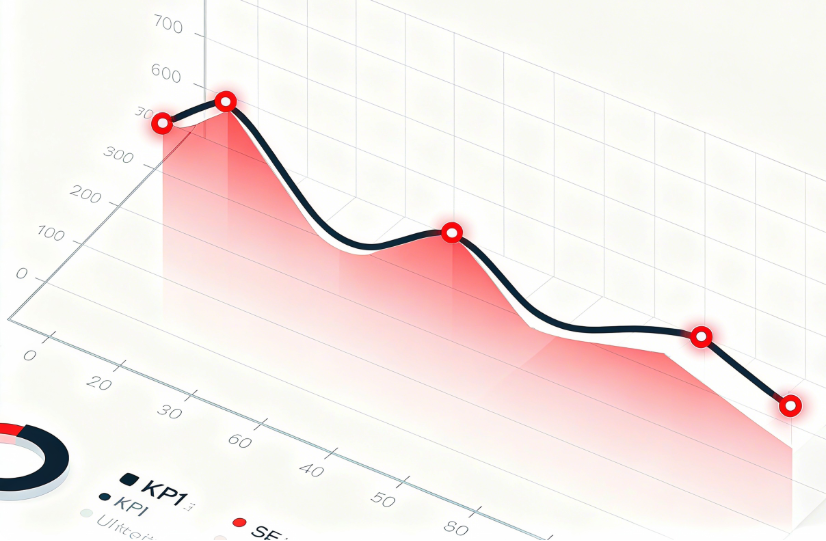——Design System & Components — Executive Brief: Cost, Risk, and a Phased Rollout Plan

1. Executive Summary
Modern product organizations win by shipping with confidence. Standardizing on Design System & Components is not a cosmetic decision; it is a structural upgrade to how software is planned, built, and measured. The investment converts scattered UI work into paved paths, shortens time‑to‑merge, raises accessibility compliance, and makes performance and analytics part of the default. For executives, the questions are simple: What does it cost? When do we see ROI? What could go wrong? And how do we organize a 90‑day rollout that sticks? This brief answers those questions from the vantage point of leadership and ties them to clear quarterly targets.
What Changes When You Anchor on Design System & Components
Language becomes consistent: teams talk in tokens, primitives, variants, and patterns rather than ad‑hoc widgets. Governance becomes predictable: releases follow semver, deprecations arrive with migration guides, and docs are a first‑class asset. Measurement becomes routine: adoption, a11y pass rate, visual regression failures, and route budgets are visible in one dashboard. The shift is cultural as much as technical, and it is easier to sustain when a partner such as a design system agency helps bootstrap the first two quarters.
2. Cost Model: Where the Money and Time Go
Architecture and discovery: component inventory, token audit, and API conventions for variants and theming. Build and migration: token stabilization, core primitives, heavy components (table, form, combobox, date picker), docs, and codemods. Automation and quality: Storybook, visual diff service, a11y checks, and release pipelines. Training and rollout: workshops, office hours, and onboarding materials. With a capable design system agency, the spend concentrates in the first 90–120 days and is materially lower than building a full‑time platform team from scratch. The goal is to leave the company with production‑ready packages, scripts, and a governance cadence you own.
ROI Model: How the Investment Pays Back
Track the deltas you can bank. If regression defects on top workflows drop by 30–50%, if median design‑to‑PR time shrinks by a day, and if a11y and visual gates catch issues pre‑merge, the savings compound. Add conversion lift from consistent forms, clearer empty states, and stronger error handling. Add faster onboarding because paved paths eliminate decision churn. Organizations that anchor on Design System & Components typically see breakeven in under two release trains, with measurable benefits across engineering, design, and support. When a design system agency participates, ask them to validate ROI with baseline dashboards and a historical bug ledger.
Risk Register: What Can Go Wrong—and How to Control It
Governance drift: versions ship without deprecation policy, forks appear, and variant sprawl returns. Invisible toil: automation breaks and CI slows, so teams bypass the system. Adoption apathy: squads think the library is someone else’s project. Mitigations: a small council owns API rules and releases, import bans block legacy packages, fast‑lane CI keeps component PRs under ten minutes, and adoption OKRs appear on every roadmap. Risk will never be zero; the point is to make it observable, owned, and steadily shrinking under the Design System & Components umbrella.

3. Team Shape and Accountability
Keep the council small and decisive: a lead engineer, a lead designer, a documentation owner, and a release captain. Add domain stewards from two or three product lines on rotation. The council approves variants, manages deprecations, and sets API style. Platform engineering owns releases and automation. Design owns tokens and content patterns. QA owns a11y and visual regression gates. Product management owns adoption and business outcomes. If you bring in a design system agency, make their deliverables live in your repositories and tie them to the same OKRs and dashboards as internal teams.
Operating Model and Governance
Release every two to four weeks with semver. Publish a changelog with removal dates and codemods for breaking changes. Treat tokens as a product with snapshots in CI. Require Storybook examples with copy‑and‑paste snippets and a11y notes. Track package adoption by repository and run outreach for lagging teams. Align the operating cadence with quarterly objectives so progress is visible and sponsorship stays strong. Design System & Components become the reliable platform that accelerates all initiatives rather than an isolated toolkit.
Metrics That Matter to Executives
Velocity: time from design approval to PR merge and from PR to release. Reliability: visual diff failures caught pre‑merge, a11y pass rate on core flows, and incident volume tied to UI defects. Efficiency: bundle budgets per route and percent of routes under budget. Adoption: repositories importing the library, surfaces using the heavy components, and rate of legacy cleanup. Business outcomes: onboarding completion, self‑serve conversion, reduced ticket volume on forms and tables. Publish these metrics once and reuse them across quarters to make progress undeniable.
The 90‑Day Phased Rollout
Days 0–30 — Inventory and Baselines. Identify token drift, component clones, and pattern inconsistencies. Stand up dashboards for adoption, errors, and a11y. Draft API standards for variants and theming. Ship the first wave of tokens and 12 core primitives. Days 31–60 — Documentation and Automation. Stand up Storybook, write usage guidance, and add visual and a11y checks to CI. Publish the first version with a clean changelog and deprecations. Days 61–90 — Migration and Fast Lanes. Deliver codemods for legacy components, enforce import rules, and add a fast lane for component PRs with parallel tests and short feedback loops. By day 90 the organization is building new UI on Design System & Components by default.
Budget Guardrails
Limit new variants to documented business cases. Require proof of adoption for any new component. Bundle spend on automation so every repository benefits. Treat Storybook and visual diff service as shared infrastructure. If you hire a design system agency, contract for outcomes—inventory delivered, tokens stabilized, 12 core components live, and CI rules enforced. Insist on a single handover repository and live workshops so internal teams sustain the platform after the engagement.
Multi‑Product Realities
Most B2B portfolios include an admin console, a customer portal, marketing sites, and a mobile client. One library can serve them all with clear boundaries. Create a theming layer for brands and density modes for data‑heavy screens. Keep a single token source. When a product line truly diverges, split packages by domain rather than forking the entire library. Consistency where it matters, flexibility where it is cheap—this is the right posture for Design System & Components in multi‑product companies.

Security, Privacy, and Compliance
Treat privacy and security as product requirements. Document PII handling for file uploads, forms, and tables. Provide consent banners and preference centers as components. Bake audit logging into high‑risk widgets. Add redaction rules to analytics and validate them in CI. Ask a design system agency to review these patterns against SOC 2 and ISO expectations. Compliance becomes easier when patterns are centralized and reusable, and when Design System & Components own the critical flows.
4. Case‑Study Snapshots (Anonymized)
Mid‑stage SaaS vendor with three product lines: after 60 days of token cleanup and primitive adoption, visual diffs caught six regressions per release before merge. After 90 days, time‑to‑merge on UI PRs dropped from 3.6 days to 2.1 days, while a11y pass rate on core flows rose from 82% to 96%. Another company with heavy table usage moved to a single table component with clear variant policy; export success rate improved and support tickets fell. These outcomes were achieved by putting Design System & Components at the center and, in the first quarter, co‑leading with a design system agency to accelerate adoption and codemods.
Frequently Asked Executive Questions
Do we build tokens first or components first? If tokens are chaotic, stabilize them first; otherwise, converge the primitives and evolve tokens in lockstep. How many variants are too many? Fewer, stronger variants beat wide, shallow menus. When should we split packages? Only when domain needs truly diverge; prefer theming and density modes first. How do we prove ROI? Track defects tied to UI inconsistency, time‑to‑merge for UI PRs, and ticket volume on forms and tables. Show before‑and‑after dashboards tied to Design System & Components so sponsorship stays durable.
5. Decision Checklist for This Quarter
Approve the council and the release cadence. Pick the top five flows that will be governed by the system. Fund the first budget tranche with explicit deliverables. Choose success metrics for the quarter and lock them into dashboards. Decide whether to bring in a design system agency for a short, outcome‑based engagement. Require that all artifacts—tokens, components, docs, codemods, tests, and dashboards—live together in the primary repository so the company owns the platform, not the vendor.
Appendix: Concrete Deliverables to Demand
Inventory of tokens and component clones; a stabilized token package with semantic aliases; 12–16 primitives published with copy‑and‑paste examples; heavy components (table, form, combobox, date picker) with a11y notes and performance guidelines; Storybook with interaction tests and visual diffs; CI rules that block legacy imports and enforce budgets; codemods for breaking changes; a public changelog with removal dates; and a short runbook for release and rollback. These deliverables are the minimum viable platform for Design System & Components.
Acknowledgments and Further Reading
Internal engineering guidelines, accessibility standards, performance handbooks, and product analytics playbooks should inform your roadmap. External material such as Design System Agency for B2B SaaS: A Practical Guide can supply templates and checklists. Use them as scaffolding, not as a substitute for your own metrics. The brief you are reading is designed to be copied into your release process so Design System & Components become how your teams ship by default.
Addendum: Executive Signals to Watch
Cycle time for UI pull requests, a11y pass rate on core flows, route‑level budgets, and adoption by repository are the four leading signals of platform health. If any of them stall, the council should remove friction: simplify the variant policy, add a fast lane for component PRs, or pair with teams on migrations. When leadership reviews progress monthly, tie each signal back to Design System & Components and require a narrative that explains whether the system is accelerating or dragging on delivery.







